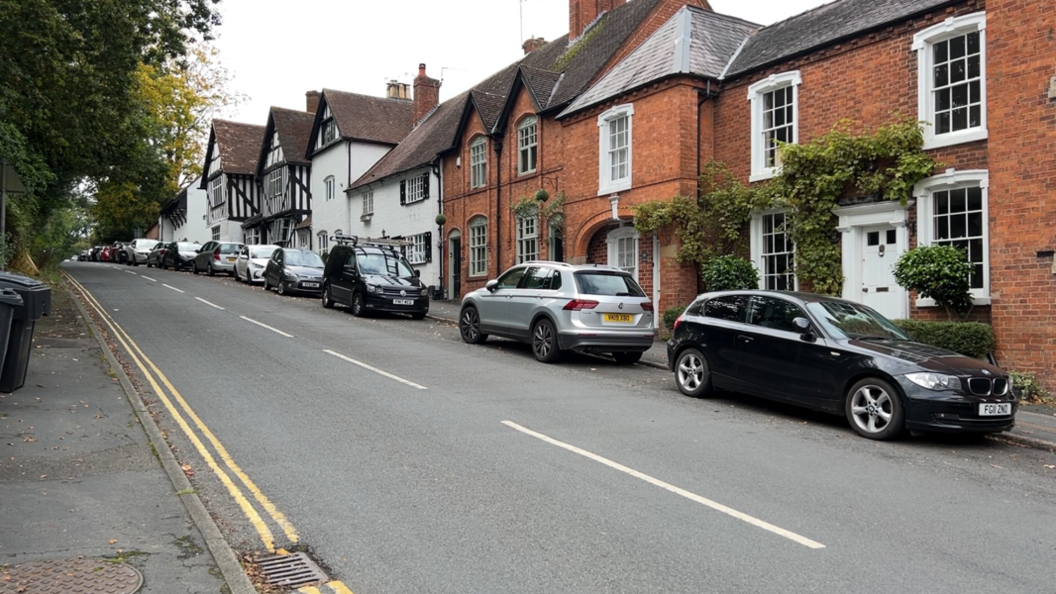Green belt set for 9000 homes, council warns

Nearly 90% of the district of Bromsgrove is currently designated as green belt
- Published
Unprecedented housebuilding targets would much reduce Bromsgrove's green belt, councillors have warned.
Under the new Labour government's proposals, the district would be expected to deliver 704 new homes a year, an 82% increase on previous requirements.
Currently, 89% of Bromsgrove is designated as green belt. But, at an extraordinary meeting this week of the borough council, members were told an estimated 9,000 homes would need to be built on it between now and 2041.
A consultation over the government's planning reforms closed on Tuesday, with Bromsgrove formally objecting to the targets.
"Just giving developers free rein to concrete over the countryside isn't the answer," said councillor Rob Hunter, leader of the Bromsgrove's Liberal Democrat group.
"You're essentially putting the most pressure on housebuilding in the very places you should be looking to protect.
"We recognise we need to build some houses… but not of this magnitude and size," said Conservative council leader Karen May.

Liberal Democrat group leader Rob Hunter said the housebuilding targets were "historically unprecedented" and would fundamentally change the district
Under Labour's plans, if a council's housing targets cannot be met, some existing green belt land would be re-designated as "grey belt", to free up land for homes.
While Westminster has the power to set targets; it would be up to local authorities, like Bromsgrove, to decide exactly where these go.
"The council is exploring options to provide some much needed housing, while also protecting the green belt as much as possible," said Conservative Kit Taylor, Bromsgrove's cabinet member for planning.
"We feel the ability to do this has been compromised and the green belt will be much reduced as an outcome."
'Countryside needs to be kept'
Affordability is a problem in Bromsgrove.
In 2023, average house prices were 10.5 times average earnings in the region
"It’s difficult, it’s going to take a while and a lot of the finer things in life are going to have to be dropped", said Daniel Strong, a trainee pharmacy dispenser.
Together he and his partner Amy Newton - also a trainee pharmacy technician - are saving to move out of their family homes.
"Some countryside needs to be kept... Some might have to go," he said.

Daniel Strong, 27, and Amy Newton, 24, hope to buy their first home in the coming years
The government aims to build 1.5 million more homes in the next five years, with the most unaffordable areas set for the largest uplift in housebuilding.
"We have a crisis in housing. I could take you to the homes of residents that would make you weep when you see the overcrowded conditions," said Labour councillor Mick Marshall.
"I think targets are to be welcomed. Targets work. But they've got to be the right targets... they've got to be achievable and realistic."

A council review of Bromsgrove's green belt has been under way since 2019, with parcels of land graded for their usefulness in stopping urban sprawl
Even before these proposals, the district's green belt was set for development.
In 2017, the council's local plan set out how 2,300 homes would need to be built on it up to 2030, a figure which had risen to 3,500 before the general election.
A council-led review of the district's green belt has been under way since 2019.
Its conclusions are likely to be key in deciding which areas could be unlocked for new homes.
"I don’t think there’s a single member of this council who’s not concerned about the impact of additional housing," said independent deputy leader Sue Baxter.
"I actually feel more for the settlements: Alvechurch, Wythall, Hagley, because Bromsgrove town is full."
Anxiety in Alvechurch

Minutes from a junction of the M42, the village of Alvechurch is one part of the district that could see further development
Surrounded by country lanes and fields, the village of Alvechurch sits right in the heart of the district's green belt.
Yet residents are split over whether it should be sacrificed.
"It's like Thomas Hardy country here," said horserider Catherine Hamer, who lives in the nearby hamlet of Withybed Green.
"It's bad news... You end up carving more and more roads, more and more tarmac.
"9,000 homes? Now you’re talking about 18,000 extra cars.".

Catherine Hamer feared further development would clog up the district's rural roads
"I think it’s got to be done to some extent... the house prices are high because there’s not enough homes," said Mark Sammons, a chiropractor in the village.
"On the other hand, there has to be a balance. Some of the big proposals I’ve heard are probably too big," he said.
"I think there’s lots of scope for infill, around the sides and within the village itself."
Follow BBC West Midlands on Facebook, external, X, external and Instagram, external. Send your story ideas to: newsonline.westmidlands@bbc.co.uk, external
Related topics
- Published2 August 2024

- Published20 August 2024

- Published3 July 2024
